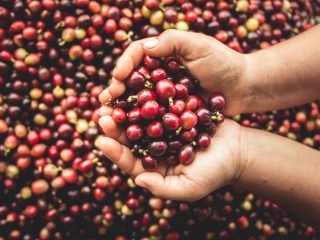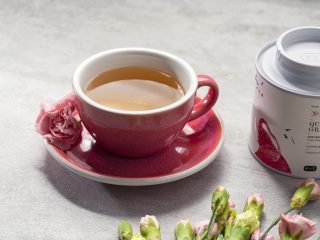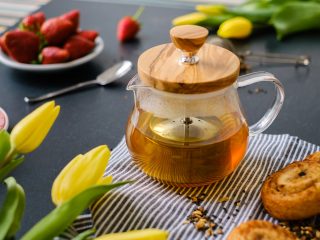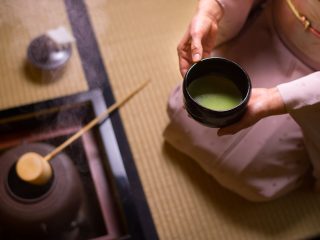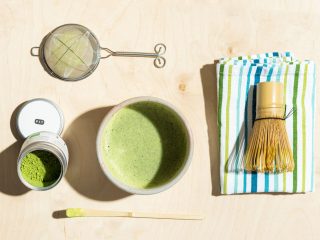What do you know about rooibos? In spite of being placed right next to green and black teas in vast majority of coffeeshop menus, this tisane is produced from a different plant, i.e. red bush. Those who consider rooibos a boring (although at least caffeine-free) alternative to coffee and tea are in for a big surprise – not only is it healthy, but also introduces new, stunning flavors!
Rooibos is not a tea…
First things first. What exactly is rooibos? It is sometimes mistakenly referred to as „tea” – however, unlike tea made from camelia sinensis, rooibos is produced from the leaves of Aspalathus Linearis, a plant indigenous to South Africa. Both undergo the same proces –when picked, leaves are left to oxidise in order to bring out their own characteristic color and flavors. You may also stumble upon green (unoxidized) rooibos – it’s less common than its so-calledf ermented version and has slightly grassy notes.

Health aspect
I’m sure you know by now that consuming rooibos is healthy – however, it’s worth going into a bit more detail as there truly is an abundance of benefits. Almost all of them come down to the presence of antioxidants – specifically, aspalathin and quercetin.
Although rooibos research is still in its early stages, preliminary studies show that this tisane has anti-inflammatory, antiatherosclerotic and antiviraleffects; one of the articles published in 2005 mentions inhibiton of tumor promotion in mice! And there is more – consuming fermented (oxidised) red bush tea improves both the lipid profile and redox status, which to our cardiovascular system is the equivalent of a full service SPA treatment.
If gloating overall the benefits of antioxidants in rooibos is not impressive enough, I have better news – this tisane is caffeine-free, i.e. can be a nice alternative to coffee and tea.
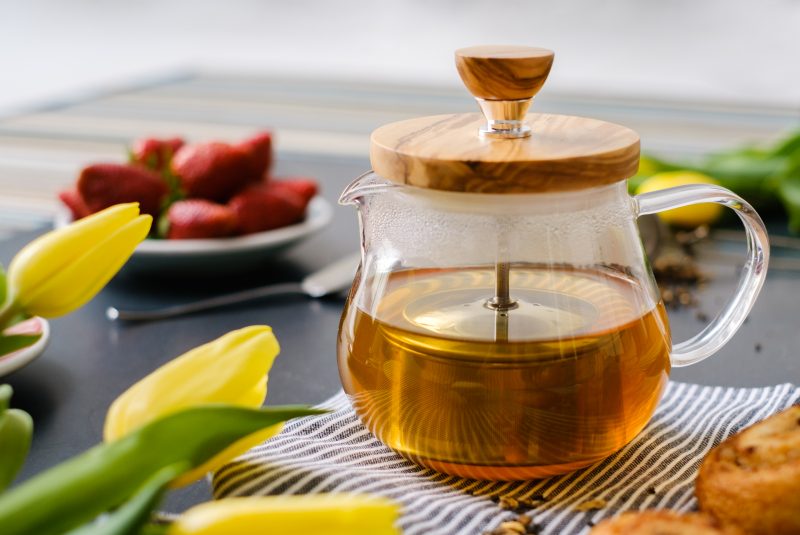
Sensorial experience
Enough about health – let’s give our tastebuds some consideration! Thankfully rooibos offers a true richness of flavors – if you don’t believe me, read up on an aroma wheel created specifically for rooibos. Moreover, it contains very little tannins, which makes it a perfect beverage for those who do not enjoy astringency.
What flavors can we expect from rooibos? Its most popular, i.e. fermented version has notes of honey, caramel, wood and spices. Make sure you try the tisane with fruit that balance out its natural sweetness and add subtle acidity – citruses, raspberries, cranberries and similar will complement rooibos perfectly. On the other hand, if you’re after more warming beverage, look for leaves scented with cinnamon.
Brewing
Thanks to low tannine content, brewing rooibos is simple and easy – no need to worry about overextracting leaves and if you use a transparent infuser, the amber color of the tea will be very pleasing to the eye. As far as the recipe goes, I recommend starting with 5g of rooibos/200g water and modifying these proportions according to your personal preferences – after all, discovering new flavors is fun!

Sources:
Canda, B. D., Oguntibeju, O. O., & Marnewick, J. L. (2014). Effects of consumption of rooibos (Aspalathus linearis) and a rooibos-derived commercial supplement on hepatic tissue injury by tert-butyl hydroperoxide in Wistar rats. Oxidative medicine and cellular longevity, 2014, 716832. doi:10.1155/2014/716832
Marnewick J, Joubert E, Joseph S, Swanevelder S, Swart P, Gelderblom W. Inhibition of tumour promotion in mouse skin by extracts of rooibos (Aspalathus linearis) and honeybush (Cyclopia intermedia), unique South African herbal teas. Cancer Letters. 2005;224(2):193–202.


